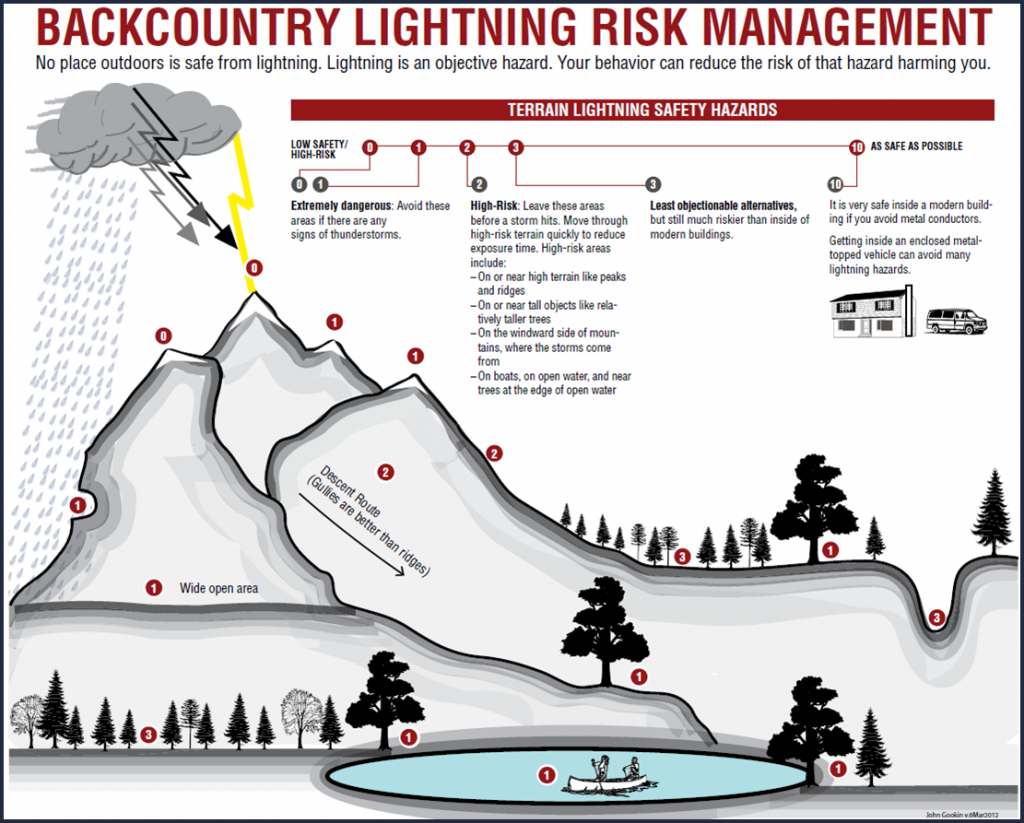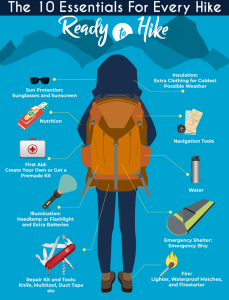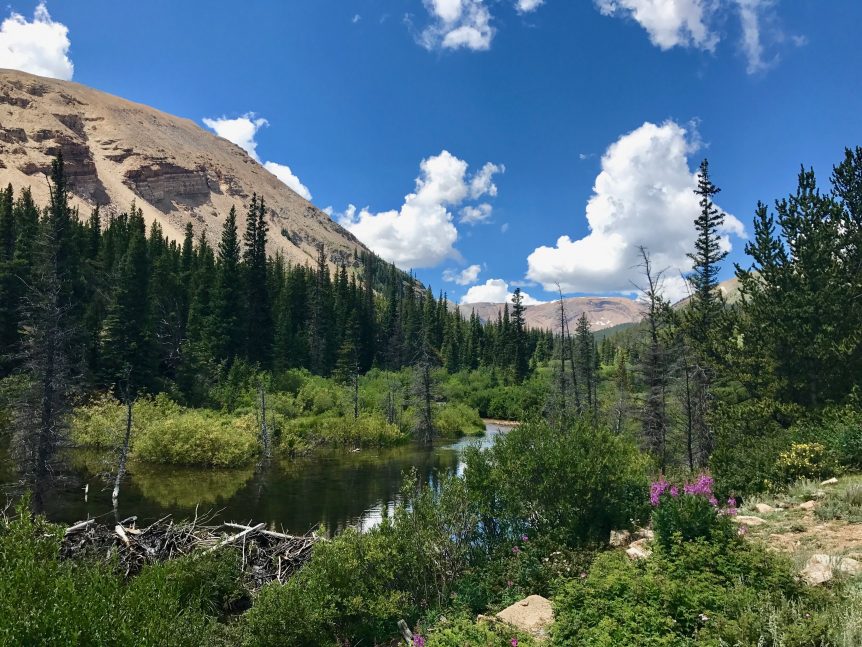Traveling into Colorado’s beautiful backcountry carries some risk, especially if you’re going overnight or doing a tricky sport like rock climbing. That’s why it’s important to plan it out, know the weather forecast, tell someone where you’re going, bring the right gear and go with at least one other person.
Responsible behavior protects you and others. No matter your chosen activity, you’ll feel safer following these guidelines for summer backcountry adventure. Planning ahead will also ensure that Colorado SAR teams’ limited volunteer resources are kept for true emergencies.
KNOW BEFORE YOU GO
Heading into the backcountry is a Colorado pastime, but it shouldn’t be done impulsively — or without preparation like checking the weather, packing necessities and notifying someone of your plans.
Recognize the risks:
Potential hazards include, but aren’t limited to, getting lost, being struck by lightning, becoming injured, hypothermia and accidental death. You can experience dangerous backcountry conditions no matter your chosen activity, and they include things like thunderstorms, active wildfires, falling and fallen debris, ash pits and flash floods.
Unsurprisingly, in 2019 alone, the Colorado Search and Rescue Association reported 2,875 search-and-rescue incidents across the state; in 2020 that number was closer to 4000.
“In 2020, the numbers were even higher — for some teams, two to three times higher — due to COVID-19 and more people getting interested in hiking and camping,” said Linda Ziccardi, an Alpine Rescue Team member in Evergreen. “Colorado SAR teams are expecting another very busy season [in 2021].”
In Summit County, rescuers are experiencing record numbers of backcountry incidents in 2021. Summit County Rescue Group mission coordinator Charles Pitman comments, “We went from 144 calls in 2019 to 185 in 2020; this year we’re at 119 already in mid-July.”
That’s why preparation and having a good understanding of the group’s abilities and limitations are so important when picking an activity.
“People get into trouble primarily because they are not prepared — like with improper clothing, equipment, food and/or water — or don’t have the proper skills, knowledge and abilities,” Ziccardi added. “Backcountry visitors also get in trouble more often if they are traveling alone, so go with a friend.”
Thinking about pursuing a more hazardous adventure, like multi-day backpacking trips, whitewater-rafting adventures, mountaineering, rock climbing or even paragliding? Hire a qualified guide to lead the way. See a list of Colorado guides and outfitters here >>
Check weather predictions:
Colorado is known for its wild, rapidly changing weather patterns and, in summer, it’s no different. It can be sunny and 70 degrees one minute, then storming—or possibly even snowing if you’re at high altitudes—the next. With this in mind, it’s important to seek out hourly predictions (for where you’re going, not just where you’re coming from) with the National Weather Service.
“Just because it is warm and sunny in Denver doesn’t mean you should wear shorts and a tank top to the backcountry,” Ziccardi said. “Understand that the temperature drops 4 degrees for every 1,000 feet of elevation gain.”
Colorado’s mountains are also notorious for severe thunderstorms that can arrive swiftly, and often after lunch. So, if you’re heading into the mountains for a scenic hike, reduce your risk by starting early and being off peaks and ridges and away from trees before noon.
Caught in a thunderstorm? Move away from risky areas like high-elevation terrain (peaks and ridges), tall objects (like trees), the windward side of a mountain (where the storm blows in) and water. See the National Weather Service’s Lightning Safety Tips here >>

“If you have to turn around, no worries,” said Mountain Rescue Aspen’s rescue leader coordinator Scott Messina. “The mountains will always be here. Enjoy the journey.”
Map it out:
Just like it’s important to watch the weather and plan accordingly, it’s also important to map out your trek. Do research ahead of time and make sure you’ve downloaded a map to your phone, while you still have service. Better yet, bring a paper map; paper maps don’t get dead batteries. Once you’re off the grid, you can expect your smart-phone navigation (and phone service in general) to be spotty. Trail-mapping resources, like the Colorado Trail Explorer (COTREX) app handy, too. In addition, these resources can provide descriptions and reviews that give you an indication of trail conditions and difficulty, such as whether you’ll need to navigate to stay on the right path.
To simplify a rescue should you go missing, make sure you tell someone where you’re going and when you’ll be back — and don’t deviate from that plan. You can also fill out a form and leave it on your car.
Things to bring:
If you’re heading into the backcountry, don’t go it alone. First and foremost, bring a friend … or two or three. Have some basic first-aid training and tote a pack with the following ten essentials:
- Water: Bring more than you think you’ll need and carry at least two liters per person; hydration packs, like a CamelBak, are especially handy because they can carry lots of water and fit in your pack.
- Food: Pack enough for how long you plan to be out and bring extra just in case.
- Sun protection: Bring things like a hat, buff, sunscreen, protective clothing and sunglasses.
- Daily medications if you need them: Bring an EpiPen if you have severe allergies.
- Travel first-aid kit
- Headlamp/flashlight and extra batteries
- Multi-tool or pocket knife, and duct tape for quick repairs
- Extra clothing layers for the chilliest weather possible on your trek
- Navigation tools: Paper map, compass, GPS device, cell phone, etc.
- Backup cell-phone battery and power source
- Whistle:To alert people of your presence if you’re lost and/or injured
- Emergency shelter:Like an emergency bivy, blanket, small tarp or even a large, heavy-duty lawn/leaf bag
- Lighter or waterproof matches and emergency tinder

Depending on the type of trip you’re taking, you may also want to bring an emergency electronic signaling device.
“Cell phones don’t always work [in the backcountry] so carry an emergency communication device — like SPOT, PLB or inReach — and know how to use it,” Messina said.
Charles Pitman adds, “The best kind of communication device is one that allows for two-way communication, so you can text your friends and let them know your status, or in the case of a true emergency, you can let search and rescue teams know the specific nature of your emergency. This helps a rescue team plan and allocate resources.”
Understand signs of altitude sickness:
Especially when you’re coming from a much lower elevation, Colorado’s high reaches might make you sick due to less oxygen in the air. Practice patience by resting for at least 24 hours at a lower-elevation spot before heading up into the mountains. Keep hydrated, and avoid alcohol while you’re acclimating.
“Be in good physical condition and understand how altitude might affect you, especially if you just came from a low-elevation place,” Ziccardi said. “Do not overestimate your own skills and abilities, or those of the members of your group.” Altitude sickness can strike anyone anytime, regardless of age or physical condition.
Common symptoms of altitude sickness include a mild headache, dizziness, shortness of breath, fatigue and issues sleeping. Emergency symptoms, which can be deadly, include a rapid pulse, loss of balance, slurring words, lack of coordination, irrational behavior and even cerebral and/or pulmonary edema. If you get altitude sickness, you must descend to a lower elevation and seek medical treatment if necessary.

RECREATE RESPONSIBLY
Now that you have your adventure plans in place, it’s time to hit the road. Follow these to-dos for the trail and know what to do if you’re caught in an emergency situation.
Trail talk:
- Blistered or sore feet can impact your mobility and ruin a trip, especially if you’re far from your car. Always wear footwear that’s appropriate for your activity. For instance, if you’re climbing a fourteener (a mountain taller than 14,000 feet), wear hiking boots that have already been broken in to avoid blisters and leave the flipflops at home.
- Dress in layers for any kind of weather — sun, rain, wind, sleet and even snow — and slather yourself in sunscreen. The sun’s rays are strong here, especially at higher elevations and even when it’s overcast.
- Do current and future travelers a favor by keeping the backcountry pristine. Please pack out your trash and leave it better than you found it. Use the Care for Colorado Principles as your guide.
- With the recent increase in backcountry usage, popular trailheads have seen crowds and parking problems. Avoid the most popular trailheads on weekends and holidays. Have a back-up plan if you arrive and find a parking lot full; don’t park on the road. Consider carpooling if your group is from the same household or everyone is vaccinated.
- Colorado search & rescue services are free of charge, so never hesitate to call. But you can definitely expect a bill for a medical helicopter or ambulance if it’s required. That’s why you should have travel insurance that covers evacuations. You can also purchase a CORSAR card, which is not insurance, but helps support Colorado search & rescue services. A one-year card is $3 and a portion of your fee goes into a fund that SAR teams can apply to for expense reimbursement.
What to do in an emergency:
If you’re in a true backcountry emergency, whether you’re lost or injured, call or text 911. Have an app on your phone, like “My GPS Coordinates” to get location coordinates to report to dispatch. Even if your phone doesn’t have a signal, it’s important to give this a try; sometimes a text will go through in areas where a call will not. You can also use your emergency electronic signaling device if you brought one.
Not sure where you are? First and foremost, stay calm and stop where you are. Then think, observe and plan. Without going far off your original route, look for a familiar landmark or location. If you’re truly lost, stay put, hydrate and eat some food, and put on some extra clothing to stay warm. Use your whistle to alert anyone nearby of your presence and consider building a campfire if you can do it carefully and there isn’t a fire ban (check before you go for county-specific fire-restriction info). It will take some time for rescuers to get to you, so it’s important to seek shelter and wait patiently.
Much of the above applies to injuries as well. If there are people nearby, ask them for help. Be prepared with a first-aid kit and know how to use it. Try to call or text 911, or use your personal signaling device, if the injury or illness is serious and requires swift medical attention.
Wondering when it’s appropriate to call search and rescue? Read more about it here.
How to practice fire safety:
If camping is your kind of backcountry fun, knowing how to responsibly manage a campfire is paramount. That’s because even a small fire can get out of control and turn into a wildfire if it’s not tended and put out completely. See National Park Service guidelines and use these Care for Colorado tips to minimize campfire impacts >>
Get a guide:
Colorado has plenty of options when it comes to guides and outfitters that are trained to keep you safe. Find the right guide for you with the Colorado Outdoor Recreation Industry Directory, plus all the COLORADO.com resources below.
- Hiking
- Rock climbing
- Mountaineering
- Mountain biking
- Rafting
- Kayaking
- Fishing
- Hunting
- Jeep, ATV, OHV & motorcycle tours
- Paragliding & hang-gliding
- Wildlife viewing & photography
- Backpacking
WANT TO LEARN MORE?
Virtual Education:
- Colorado Mountain Club Online University
- The Mountaineers Virtual Education Center
- Mountain Rescue Association’s General Backcountry Safety booklet
Informational Resources by Sport:
- Hiking & Trail Running: Colorado Fourteeners Initiative, Hiking Project, Trail Run Project, COTREX
- Huts: Colorado Hut & Yurt Alliance
- Mountain biking: International Mountain Bike Association, MTB Project, Trailforks
- Multi-sport/recreation: Colorado Mountain Club, SummitPost, Leave No Trace, AllTrails, CalTopo, Recreate Responsibly, Chockstone Press guides, Fulcrum Publishing books, U.S. Forest Service, Bureau of Land Management, Colorado Parks & Wildlife
- OHV: Stay the Trail
- Rock climbing: Access Fund, Mountain Project, rakkup
- Whitewater rafting: American Whitewater
Gear/Advice Information:
Leave No Trace information

